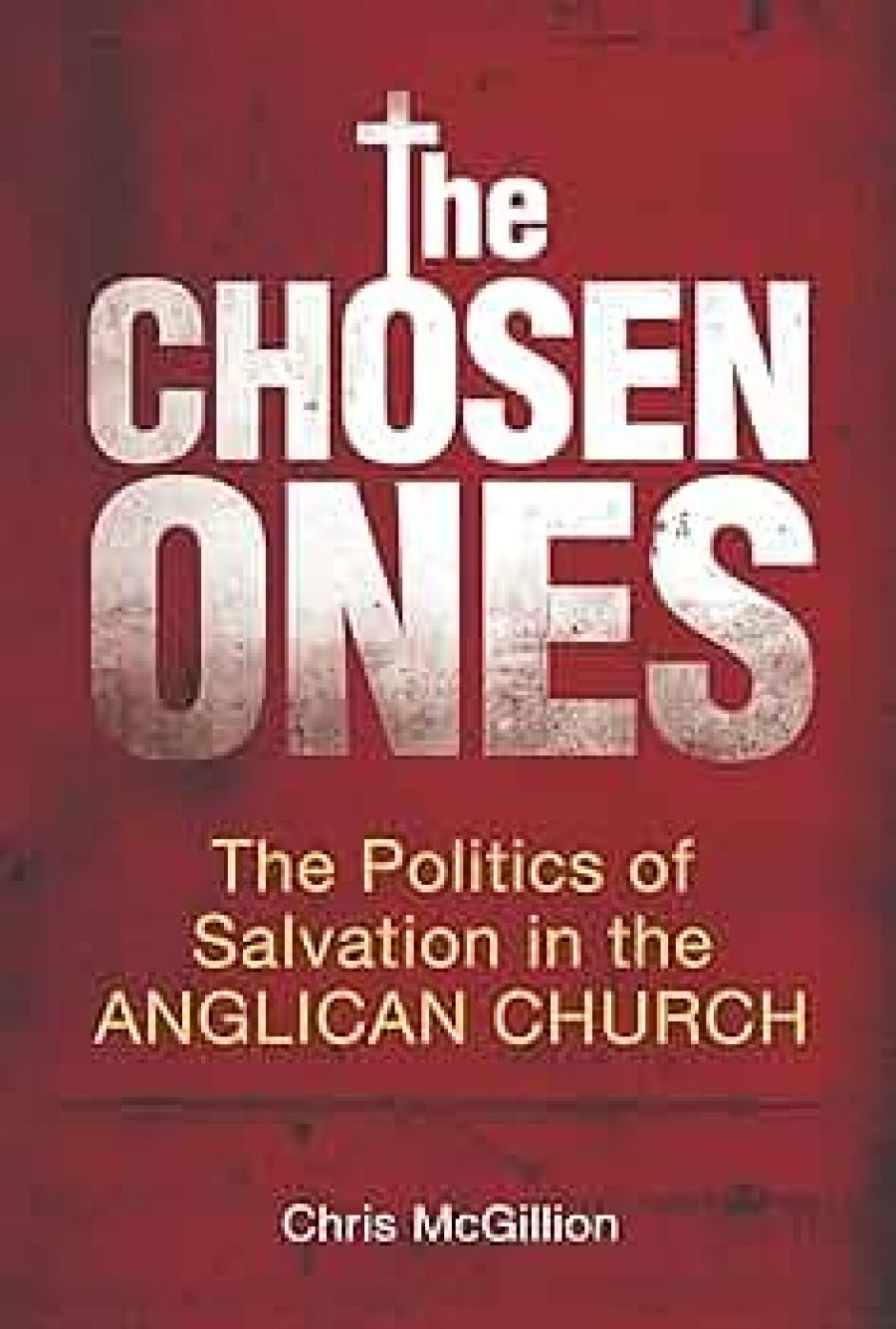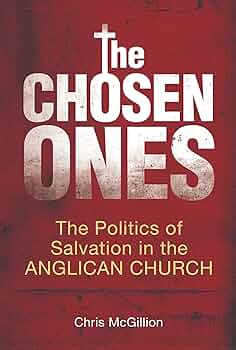
- Free Article: No
- Contents Category: Religion
- Review Article: Yes
- Article Title: Jensen the evangelist
- Online Only: No
- Custom Highlight Text:
To the outsider, the Anglican Church may well seem one of the more liberal of the Christian denominations. While the Roman Catholic Church refuses even to debate the issues, Anglicans have gone ahead and ordained both women and homosexuals to the priesthood. In Canada, one Anglican diocese has gone so far as to bless same-sex marriages. Theologically, the best-selling books of retired US bishop John Shelby Spong represent progressive Anglicanism at its extreme. Not only does Spong argue that the world view of the Bible is incompatible with contemporary scientific knowledge, but he also suggests that St Paul was gay and that Christians need not believe in god.
- Book 1 Title: The Chosen Ones
- Book 1 Subtitle: The politics of salvation in the Anglican Church
- Book 1 Biblio: Allen & Unwin, $29.95 pb, 249 pp
- Book 1 Cover Small (400 x 600):

- Book 1 Cover (800 x 1200):

But the Anglican Church is very diverse and there are those for whom such views, and others far less radical, are anathema. In the Sydney diocese – one of only a handful of dioceses in Australia that has not ordained women – there is deep concern at what is seen as a move away from Bible-based values within the wider church. Sydney’s Archbishop Peter Jensen seeks a return to what he calls ‘biblical teaching on human sexuality’, including the condemnation of homosexuality and the reassertion of the doctrine of ‘male headship’, according to which ‘man’ is always and inalienably the head of ‘woman’. He further believes that saving souls is the church’s most urgent task. Hellfire and damnation await not only atheists but adherents of non-Christian religions, as well as so-called Christians who have strayed from the path set down in the Bible.
Those who hold such views are known as conservative evangelicals, and it is with the rise of this brand of Anglicanism in Sydney that Chris McGillion’s book is most concerned. McGillion begins with a painstaking account, based on interviews with those involved, of Harry Goodhew’s tenure as archbishop of Sydney in the 1990s, a period that seemed to promise – but resoundingly failed to deliver – some faint moves toward liberalism. He goes on to trace the political manoeuvring and factional infighting surrounding the election of Jensen, which signalled the beginning of a new era of aggressive conservatism in the diocese. His account is thorough, but the minutiae of political moves and counter-moves on this small stage, around issues such as the membership of key committees and the adoption of the new prayer book, is less than enthralling for anyone not directly involved.
The story only really begins to get interesting when, about halfway through the book, McGillion takes a look at the broader context for the clash between liberal and conservative elements of the Christian churches. His exploration of fundamentalism in the US does not establish definitively – or at least not to McGillion’s satisfaction – that conservative evangelicals are fundamentalists by another name. But it does reveal that Sydney’s brand of Anglicanism has much more in common with fundamentalist and other conservative Christian denominations than it does with the liberal voices in its own church.
The same liberal–conservative divide can be seen in Anglicanism worldwide, where it has a further cultural – and geographical – dimension. The church in the UK, the US and Canada, under the leadership of liberals like the present Archbishop of Canterbury, Rowan Williams, is moving ever further towards liberalism, while the church in the so-called ‘global south’ – Africa, Asia and South America – is overwhelmingly conservative. Churches in Nigeria, Brazil and South-East Asia – by far the largest Anglican churches in the world in terms of numbers – have objected strongly to moves within Western dioceses to bless same-sex marriages and to ordain practising homosexuals as priests and bishops. Jensen has allied himself, and the diocese of Sydney, with these ultra-conservative churches, joining with them in issuing statements of condemnation and acknowledging a shared ethos. It is a strange position for an Australian church to be in: turning away from its historical roots in England to find a renewed orthodoxy in, among other places, Asia, its own geographical – and, historically, non-Christian – region.
McGillion speculates that the divisions within the Anglican church internationally may ultimately lead to a formal split, and that in this process the Sydney diocese, under Jensen, will be a key player. Certainly, Jensen seeks to foster conservative evangelicalism within Australia, both within and outside of the Anglican Church. He has indicated his support – and that of the wealthy Sydney diocese – for conservative, Bible-based churches of any denomination. He has taken his views to the UK in a controversial speaking tour and is, in McGillion’s view, ‘arguably the most significant Australian religious leader internationally of all time’. That is a large claim, but if Jensen does succeed in marshalling like-minded conservatives around the world into an alternative Anglican church, it may be justified. His response to concerns about unity within the church is always the same: that the Bible, not church tradition, is the sole authority, and that church structures and conventions must give way to the ‘spiritual imperative of the gospel’.
Whether a split is really likely – or even what such a split might mean, given the loose structure of the Anglican church – are questions McGillion does not satisfactorily answer. Certainly, Sydney Anglicanism has taken on a distinctive flavour under Jensen, and for many that flavour is no longer recognisably Anglican. But are we seeing the rise of a new, worldwide conservative Christian movement, or merely some inevitable shuffling of factional allegiances as the Anglican Church enters the twenty-first century? In the end, McGillion’s book, which favours description over analysis, does not shed much light on this question.


Comments powered by CComment